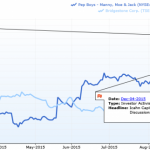Over the past year, the credit cycle finally turned, and has unleashed the latest default cycle. In fact, as BofA’s Michael Contopoulos warned last week, it may be the worst default cycle in history with “cumulative losses over the length of the entire cycle could be worse than we’ve ever seen before.”
Over the weekend, the FT got the memo with a report that “global company bond defaults at highest level since 2009” in which it said that “the global bond default rate by companies is running at its highest since 2009 with the US accounting for the vast majority, according to rating agency Standard & Poor’s. A further four defaults this week, with three coming from the troubled oil and gas sector, pushed the overall tally to 40 with a little over a quarter of 2016 done.”
To be sure, the US default cycle is bad and getting worse. But how much worse?
The latest to attempt that answer is DB’s Jim Reid who in his just released 18th annual default study explains why his “late cycle fears continue to build.” These are some of the highlights:
There are clear signs the cycle is turning, especially in the US. Our US strategists have previously suggested that we need the combination of three conditions for us to be confident the next default cycle is imminent. We need the accumulation of excessive debt and preferably of deteriorating quality, some kind of external shock/trigger and tighter monetary policy/a flattening of the yield curve. The pieces of the jigsaw are building. US corporate debt accumulation now compares with that seen prior to previous default cycles. Equity volatility has seen two spikes in the last 12 months (August and early 2016), bank equity is falling (a lead indicator of lending?) and global yield curves continue to flatten.
* * *
From the conclusion:











Leave A Comment